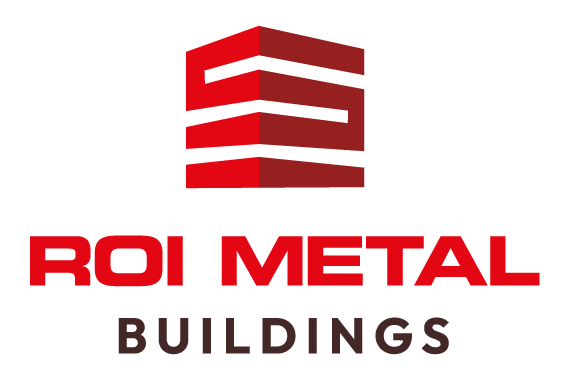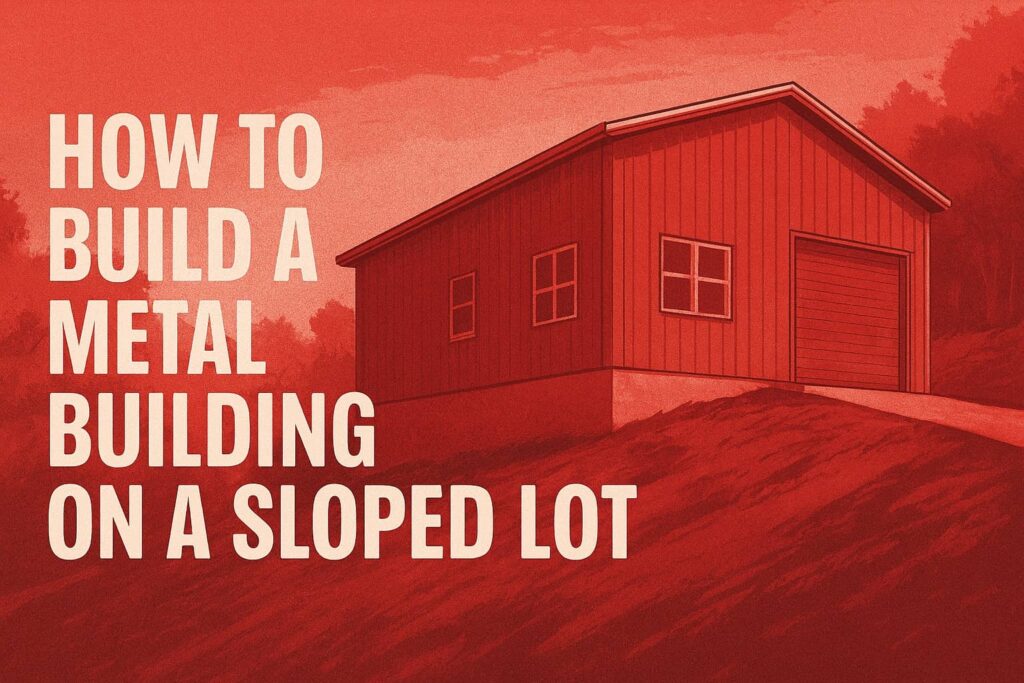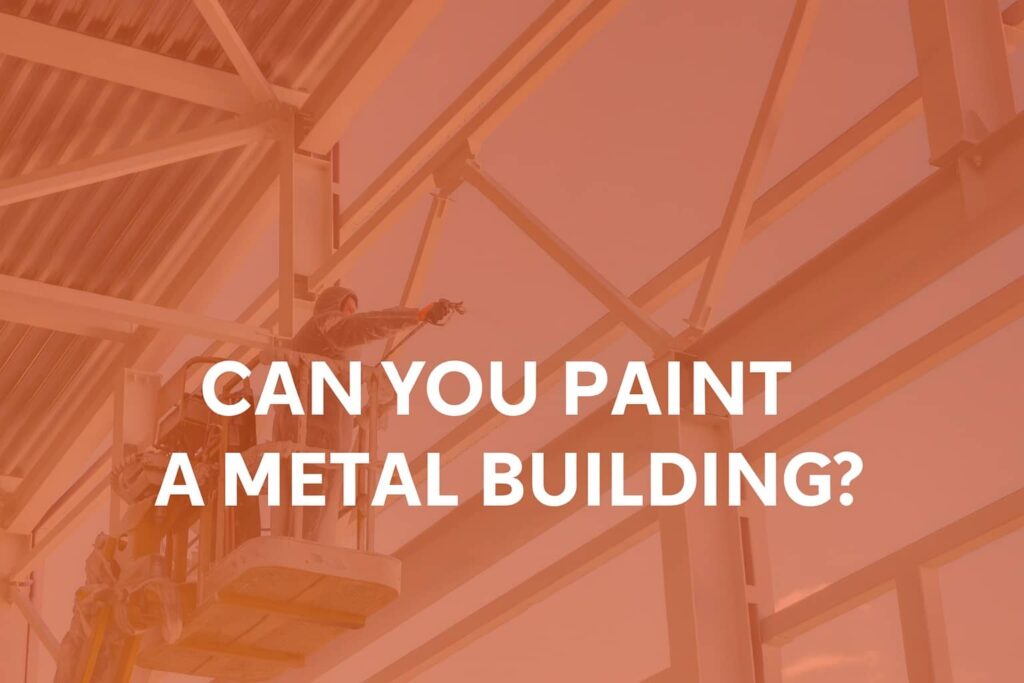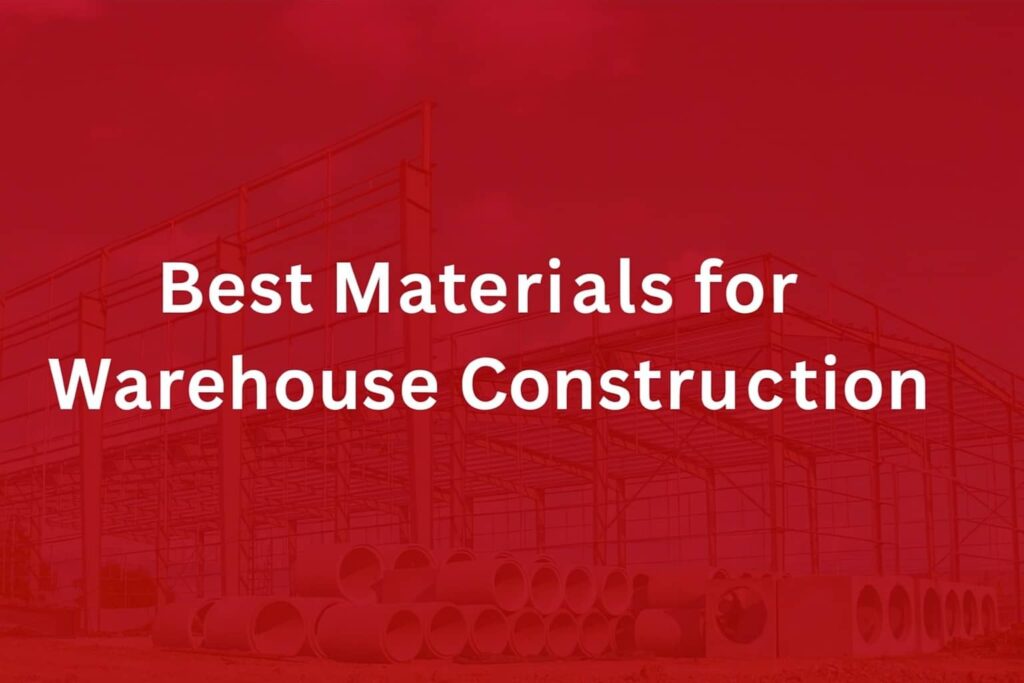Investing in a metal building with your FSA loan is a smart financial move. These structures are much more affordable than traditional buildings, which means you get more value for your money. Also, when we explore deeper into the particulars, the low interest on an FSA loan makes this investment even more sensible. But let’s not forget about the tax breaks that come with such investments – they increase your overall ROI of your wise decision. Now, let’s dive into why it’s cost-effective.
Before we begin, just a quick reminder. We wrote a detailed guide to USDA FSA Loans as part of our mini-series dedicated to the agricultural industry. Check it out and then read below for the benefits for using the USDA FSA loan to purchase a metal building for your farm or ranch.
Investing in a metal building with your FSA loan offers several benefits, such as low-interest rates, flexible repayment terms, and potential tax-deductible advantages. Metal buildings provide durable and versatile structures for farming operations, making them a wise investment for utilizing FSA loan funds.
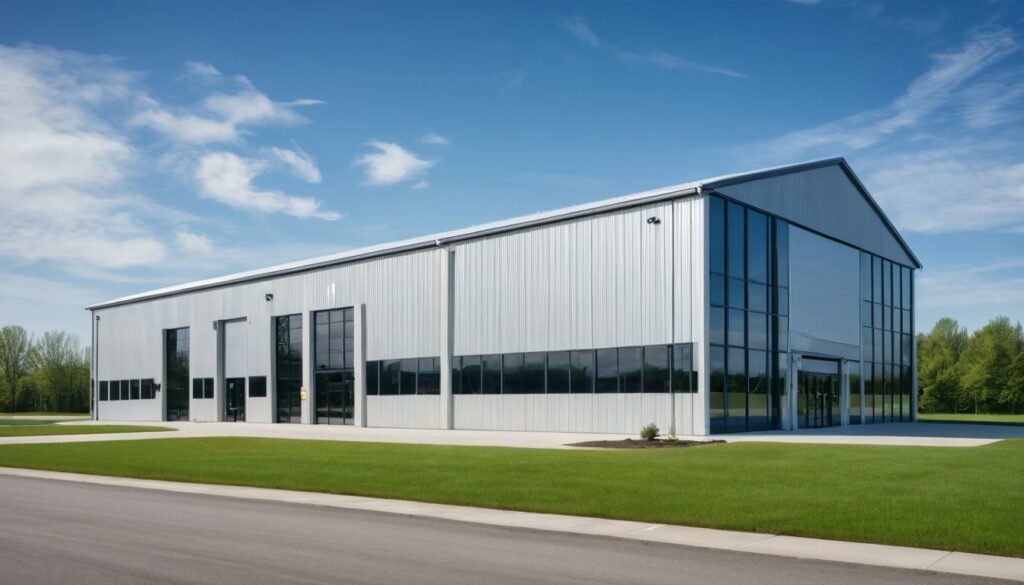
Benefits of Using Your FSA Loan to Purchase a Metal Building
Purchasing a metal building with an FSA loan comes with several advantages that make it a sensible and strategic investment. Let’s explore each benefit in detail.
Cost-Effectiveness
Metal buildings are known for their affordability compared to traditional construction methods. This makes them a cost-effective investment, especially when combined with a low-interest FSA loan. By choosing a metal building, you can potentially reduce the overall expenditure, making it more feasible to manage finances without compromising on the quality or functionality of the structure.
The cost-effectiveness of a metal building extends beyond the initial investment. With minimized construction costs and potential long-term savings due to lower maintenance requirements, the financial benefits of choosing a metal building become even more apparent over time.
Quick Construction
One of the standout features of metal buildings is their quick construction time. The components of a metal building are often pre-engineered and designed for efficient assembly, resulting in reduced construction time and lower labor costs. This aspect complements the benefits provided by an FSA loan, as reduced construction duration can lead to significant savings and quicker utilization of the completed structure.
The ability to erect a metal building swiftly offers tangible advantages, especially for time-sensitive projects or those requiring immediate occupancy or use. Additionally, less time spent on construction equates to lower associated costs, further magnifying the financial appeal of utilizing an FSA loan for a metal building project.
Customization Options
Flexibility is a key attribute of metal buildings, providing various customization options for individuals seeking tailored solutions for their specific needs. The versatility offered by metal structures allows for customization in terms of size, layout, interior features, and exterior aesthetics.
The ability to customize a metal building according to precise requirements enhances its value as an investment, accommodating diverse applications ranging from commercial use to agricultural facilities and residential spaces. Leveraging an FSA loan to procure a customizable metal building empowers individuals to optimize their investment based on their unique preferences and functional necessities.
These benefits collectively underscore the compelling nature of using an FSA loan to procure a metal building, offering financial prudence, efficiency in construction, and adaptable solutions tailored to individual needs.
Moving forward, let’s unearth more about the tax benefits arising from your wise investment in a durable and versatile metal building.
Tax Benefits from Your Metal Building Investment
When it comes to investing in a metal building, there are financial perks that can save you money in the long run. Let’s break down some of the tax benefits you can enjoy from utilizing an FSA loan for your metal building.
Depreciation Deductions
The IRS allows metal buildings to be depreciated over time as they age, just like other types of real estate. This means that as the value of the building decreases over time, you can take depreciation deductions on your taxes. This is great for lowering your taxable income and reducing the amount of tax you have to pay.
By spreading out these deductions over several years, it contributes to significant savings and defers tax payments while allowing you to reinvest these funds back into your business or other investments. Plus, it reflects the fact that your metal building will undergo wear and tear, which is normal for any durable structure.
Energy-Efficiency Credits
Another potential tax benefit is related to energy efficiency. If your metal building is equipped with energy-efficient components such as insulation, energy-efficient windows, or efficient heating and cooling systems, you may be eligible for valuable tax credits. The installation of these components not only leads to reduced energy consumption and cost savings but also positions you to claim valuable tax credits, directly reducing your tax liabilities.
For instance, by embracing sustainable practices in construction, such as using sustainable materials and installing energy-efficient infrastructure, you may qualify for green building credits or incentives offered by federal or state governments. These green building incentives serve as a reward for environmentally conscious building methods, promoting sustainability while generating meaningful cost savings through lower tax bills.
It’s clear that choosing to invest in a metal building offers more than just structural strength and durability. The potential for tax deductions and credits associated with metal buildings underscores the financial advantages of this type of investment. By maximizing these tax benefits, you not only enhance your financial position but also contribute positively to environmental sustainability—a win-win for your business and the planet.
Now, let’s turn our attention towards another vital aspect—unraveling the compelling value of energy-efficient features and renewable materials in a metal building.
Energy Efficiency and Renewable Materials’ Value
One of the most attractive features of metal buildings is their efficient use of energy. It’s not just about cost savings; it’s also about environmental responsibility and long-term sustainability.
Metal buildings are designed to be energy-efficient, with insulated panels that help maintain a comfortable indoor environment without relying heavily on heating or cooling systems. This translates to lower energy costs for the building owners in the long run. By reducing the need for artificial heating and cooling, metal buildings contribute to a significant reduction in energy consumption, aligning with sustainable practices.
Lower Energy Costs
Metal buildings can be effectively insulated, leading to reduced heating and cooling costs over time. The insulation is crucial in maintaining stable internal temperatures, creating a more comfortable atmosphere for the occupants while decreasing the reliance on external heating and cooling systems. This results in substantial cost savings on energy bills, making metal buildings an attractive option for those seeking long-term economic benefits.
It’s like having a cozy little hideaway that doesn’t require much extra work to feel just right. The insulation ensures that you’re happy inside without burning through too much extra heat or AC!
Additionally, these energy-efficient properties also contribute to reducing the overall carbon footprint associated with operating a building, aligning with sustainable and eco-friendly practices. The benefits are twofold—a comfortable environment for building occupants and reduced environmental impact from excessive energy usage.
Sustainable Construction
Another important aspect is the sustainable nature of metal buildings due to their use of steel as a primary construction material. Steel is highly recyclable, which means that the environmental impact is minimized during production and after the building’s lifecycle. By opting for a metal building, individuals contribute to sustainable construction practices by endorsing the use of recyclable materials, reducing waste and minimizing the depletion of natural resources.
“The use of steel, a highly recyclable material, makes metal buildings an eco-friendly investment, contributing to sustainability efforts and environmental consciousness.”
In essence, investing in a metal building not only offers desirable economic advantages in terms of lower energy costs but also demonstrates a commitment towards environmentally conscious decisions and long-term sustainability. The combination of energy efficiency and sustainable materials makes metal buildings an appealing choice for those looking to make a positive and responsible investment in their future.
Now that we’ve glimpsed into the economic and environmental benefits of investing in a metal building with an FSA loan, let’s turn our attention to understanding the eligibility criteria and application process for securing this valuable financing option.
FSA Loan: Eligibility and Application Process
Obtaining a loan for investing in a metal building through the Farm Service Agency (FSA) involves several important steps. The first crucial point is researching the eligibility criteria for FSA loans. These criteria can vary based on factors such as farm ownership, income, and creditworthiness.
When researching the eligibility criteria for FSA loans, it’s essential to pay attention to the specific requirements related to farm ownership, as these can differ based on whether you are a new or existing farmer seeking financial support. Additionally, understanding the income criteria and creditworthiness requirements will be important to ensure that you meet the necessary qualifications for obtaining an FSA loan.
For instance, FSA’s Direct Farm Ownership Loans offer up to 100 percent financing to help farmers and ranchers purchase or enlarge family farms, improve and expand current operations, increase agricultural productivity, and assist with land tenure. The eligibility requirements encompass aspects such as having a qualified farm enterprise, meeting general eligibility requirements such as acceptable credit history and citizenship status, demonstrating sufficient farm managerial experience, and showing that the loan cannot be obtained elsewhere.
Once you have a clear understanding of the eligibility criteria, the next step is preparing the required documentation for the FSA loan application process. Gathering the necessary documentation is critical for a smooth application process. This can include essential items such as proof of income, tax returns, identification documents, and any other specific paperwork required by the FSA. Ensuring that you have all the required documentation organized and readily available will streamline the application process and demonstrate your preparedness to move forward with securing an FSA loan.
It’s worth noting that technical assistance is available through FSA offices to help applicants complete forms and gather necessary information for the application process. Seeking guidance from these resources can be immensely beneficial in ensuring that you have all the required documentation in order.
After understanding the eligibility criteria and preparing the necessary documentation, it’s essential to seek guidance from FSA representatives to navigate the application process effectively. Let’s explore this next step in detail.
Metal Building Quality and Durability Factors
When contemplating an investment in a metal building, it’s vital to comprehend the qualities that make them a sound choice. One of the most compelling features of metal buildings is their exceptional weather resistance. Unlike traditional building materials, metal buildings demonstrate remarkable resilience against harsh weather conditions.
Weather Resistance
In areas prone to extreme weather, such as heavy rain, strong winds, or snowstorms, metal buildings provide unparalleled protection for stored goods, livestock, and equipment. The sturdy construction of these buildings ensures that your valuable assets remain sheltered from the elements over extended periods. Whether it’s safeguarding agricultural produce or industrial machinery, the weather resistance of metal buildings stands as a testament to their reliability in withstanding nature’s onslaught.
With minimal susceptibility to damage caused by weather-related wear and tear, metal buildings offer longevity and peace of mind that conventional structures may struggle to match. This weather resilience translates into reduced maintenance requirements and a prolonged lifespan for the building itself, making it a durable and safe investment.
Minimal Maintenance
The low-maintenance nature of metal buildings significantly contributes to their overall durability. Traditional building materials often require regular and substantial maintenance efforts to combat erosion, rotting, and general wear. In contrast, metal buildings demand minimal upkeep thanks to their innate resistance to rust, mold, and pest infestations. This translates into cost savings for the owner over the lifespan of the building.
By reducing the need for frequent repairs and maintenance tasks, metal buildings reinforce their status as dependable long-term investments. This minimal maintenance requirement does not compromise the structural integrity or aesthetics of the building – rather, it enhances its overall value by ensuring a sustained level of quality year after year.
The remarkable resistance to harsh climate conditions and minimal upkeep demands truly distinguish metal buildings as durable and reliable investments in various environments.
Long-Term Advantages of a Metal Building Investment
When you invest in a metal building, there are several lasting benefits that extend beyond the initial purchase. Let’s explore these long-term advantages and how they can significantly impact your farm’s financial health and operational efficiency.
Asset Value
Metal buildings aren’t just structures; they’re assets that contribute to the overall value of your property. Investing in a well-built, durable metal building adds long-term value to your farm. This increase in property value isn’t just about aesthetics—it also reflects the functionality and utility that metal buildings bring to your farm operations, making them attractive to potential buyers if you decide to sell or upgrade in the future.
For example, investing in a metal storage building for your farm equipment not only enhances the organization and security of your equipment, but also adds tangible value to your overall property. Similarly, a metal barn provides essential shelter for livestock and equipment, further enhancing the overall asset value of your farm.
Reduced Operational Costs
In addition to asset value, metal buildings offer significant long-term financial benefits through reduced operational costs. Their cost-effectiveness and energy efficiency translate into tangible savings over time. Here’s how:
- Energy Efficiency: Metal buildings are known for their energy-efficient design, which can lead to lower energy bills compared to traditional structures. With insulated panels and reflective roofing options, these buildings help maintain consistent indoor temperatures with less reliance on heating and cooling systems.
- Low Maintenance Costs: Metal buildings are low-maintenance, reducing the need for costly repairs and upkeep over their lifespan. This means fewer expenses on painting, repairs due to rot or insect damage, and other maintenance tasks typically associated with traditional building materials like wood.
- Durability: The longevity of metal buildings means they require fewer replacements and repairs over time compared to other building materials. This durability results in long-term cost savings for farm owners, contributing to improved financial stability.
A Detailed Guide To Investing In A Metal Building With Your FSA Loan
Understanding these long-term advantages empowers farmers to make informed decisions about investing in metal buildings using FSA loans, harnessing their potential to enhance property value and streamline operational costs for sustainable, long-lasting benefits. Investing in a metal building with an FSA loan offers not only immediate advantages but also long-term financial benefits. Call us at (865) 316-9009 to get started! Our team is eager to support you in achieving your agricultural aspirations. Also, if you like our content and want to stay up to date, follow us on Facebook at https://www.facebook.com/roimetalbuildings!
